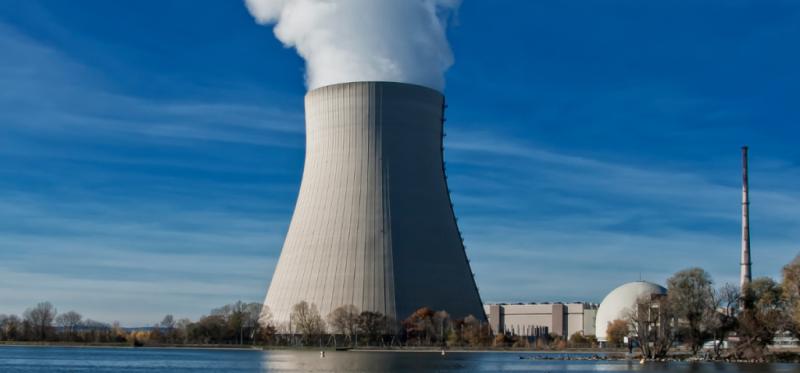Table of Contents
The International Atomic Energy Agency (IAEA) has reported that there has been no radiation leak or release from any nuclear facility in Pakistan. This is being announced at a time when social media claims and some reports indicate that Indian attacks during Operation Sindoor could have targeted Pakistani nuclear installations, including the Kirana Hills region.
No Radiation Leak from Nuclear Facility in Pakistan: IAEA
An IAEA spokesperson told several news outlets on Thursday, May 15, 2025, that No Radiation Leak or Release from any Nuclear Facility in Pakistan. The statement corroborated previous denials by the Indian Air Force, with Air Marshal A K Bharti having declared on May 12th that India never hit the Kirana Hills or any nuclear facilities in Pakistan.
The Incident and Emergency Centre of the IAEA, which keeps nuclear safety all over the world under watch, also issued no alerts or news of any release of radiation by Pakistan. This international nuclear watchdog’s assurance is meant to end all rumours and reassure the world about the safety of Pakistan’s nuclear sites after the latest conflict between Pakistan and India.
Did India Target Pakistan’s Nuke Bunker Kirana Hills?
On 12th May 2025, Air Marshal A K Bharti, the DG Air Operations, had stated that India has not struck any target in Pakistan’s Kirana Hills. At a press conference, when a specific question was raised, Air Marshal Bharti replied, “Thank you for informing us that Kirana Hills accommodates some nuclear installations. We were not aware of it. We have not struck Kirana Hills. I did not mention it in my briefing yesterday.”
The Ministry of External Affairs has also rejected any suggestions of a nuclear aspect to India’s action, saying that the military action was strictly within the conventional sphere.
Though early reports and social media were filled with speculation, there has been no official word from Pakistan that its nuclear installations were hit.
Pakistan Nuclear Radiation Leak
India and Pakistan have both refused to acknowledge that Indian attacks hit the Kirana Hills, the zone most often cited when talking about suspected nuclear storage. The Indian Air Force disdainfully rejected information about a nuclear plant there, and the Ministry of External Affairs stressed that their activities were in the realm of conventional.
| About Kirana Hills in Pakistan |
| The Kirana Hills are a very important and sensitive place in Pakistan, located in the Sargodha District of Punjab province.
Location of Kirana Hills
Military Significance
|
What are the Locations of Nuclear Facilities in Pakistan?
Pakistan boasts several nuclear sites throughout the nation, which have different purposes such as power production, research, and fuel manufacture. The specific locations and operations of some sites, especially those concerning the nuclear weapons program, are extremely sensitive and not released to the public by the government of Pakistan. Below is a summary of some of the most important sites:
| Aspect | Location |
| Nuclear Power Plants |
|
| Nuclear Research and Development |
|
| Fuel Cycle Facilities |
|
| Other Sites |
|
Potential Health and Environmental Impacts of Nuclear Radiation Leak
Nuclear radiation leakage can be very far-reaching and seriously affect human health as well as the environment. The magnitude of the effect is determined by the quantity and form of the radioactive substance released, the length of exposure, and the routes by which humans and biota are exposed.
Potential Health Impacts
Acute Effects (High Doses):
May lead to Acute Radiation Syndrome (ARS), or radiation sickness. Symptoms are:
- Nausea, vomiting, headache, tiredness.
- Skin burns, hair loss, infections, bleeding.
- Organ failure and death in extreme cases.
Long-Term Effects (Lower Doses):
- Risk of cancers (e.g., leukemia, thyroid, bone, lung, breast).
- Greater risk for children and youth.
- Risk of:
- Cardiovascular diseases.
- Cataracts.
- Genetic mutations to the next generations.
Internal Contamination:
- Happens by inhalation or ingestion of radioactive substances.
- Radioactive isotopes (such as iodine-131) can accumulate in organs such as the thyroid.
- Affects prolonged internal radiation exposure and injury.
Potential Environmental Impacts
Contamination of Air, Water, and Soil:
- Radioactive substances can contaminate air, surface water, groundwater, and soil.
- Contamination may last for a long time, depending on the isotope’s half-life.
Impact on Flora and Fauna:
- Radioactive substances are absorbed by plants and are introduced into the food web.
- Animals are impacted by direct exposure, inhalation, ingestion, and bioaccumulation.
- Can lead to:
- Health issues.
- Reproductive disorders.
- Genetic mutation.
- Reduced wildlife populations.
Disruption of Ecosystems:
- Radioactive contamination disrupts biodiversity, nutrient cycles, and food webs.
- Certain areas could become desolate, leading to habitat loss and species displacement.
Long-Term Contamination:
- Isotopes such as Cesium-137 and Strontium-90 last decades or centuries.
- They pollute the soil and water, becoming detrimental to human health and ecosystems after a period.
About International Atomic Energy Agency (IAEA)
The International Atomic Energy Agency (IAEA) is an autonomous international organisation in the United Nations system, founded in 1957. Its headquarters are located in Vienna, Austria, and it is the world centre for cooperation in the nuclear sphere.
Objectives of IAEA
Here are the key objectives of the International Atomic Energy Agency (IAEA):
- Encouraging Peaceful Uses: To speed up and expand the role of atomic energy in bringing peace, health, and prosperity to all mankind.
- Safeguards and Verification: To ensure that nuclear material and installations are not utilized for military ends, avoiding the spread of nuclear weapons.
- Nuclear Safety and Security: To establish and encourage high global standards in nuclear safety and security, safeguarding people and the environment against the harmful effects of radiation.
- Technical Cooperation: To help member countries apply nuclear science and technology for peaceful uses and assist them in achieving their goals of sustainable development.
- Exchange of Information: To promote the exchange of scientific and technical information between member states in the nuclear sector.
Conclusion
Although India has vigorously denied targeting the Kirana Hills or any Pakistani nuclear facilities, and the IAEA has so far detected no radiation leak, the fact that the Indian strikes were so close to the site, combined with its reported status as a storage facility for nuclear materials, has understandably caused concern and speculation.
Thus, according to the official reports of India and the IAEA, there is no indication that India bombarded directly Pakistan’s supposed nuclear bunker in the Kirana Hills. Still, the strategic communication of hitting near such a sensitive location cannot be ruled out entirely.


 Punjab PCS Question Paper 2025 Out: Down...
Punjab PCS Question Paper 2025 Out: Down...
 Punjab PCS Answer Key 2025 (Out Soon): G...
Punjab PCS Answer Key 2025 (Out Soon): G...
 JKPSC Question Paper 2025 Out: Download ...
JKPSC Question Paper 2025 Out: Download ...

























